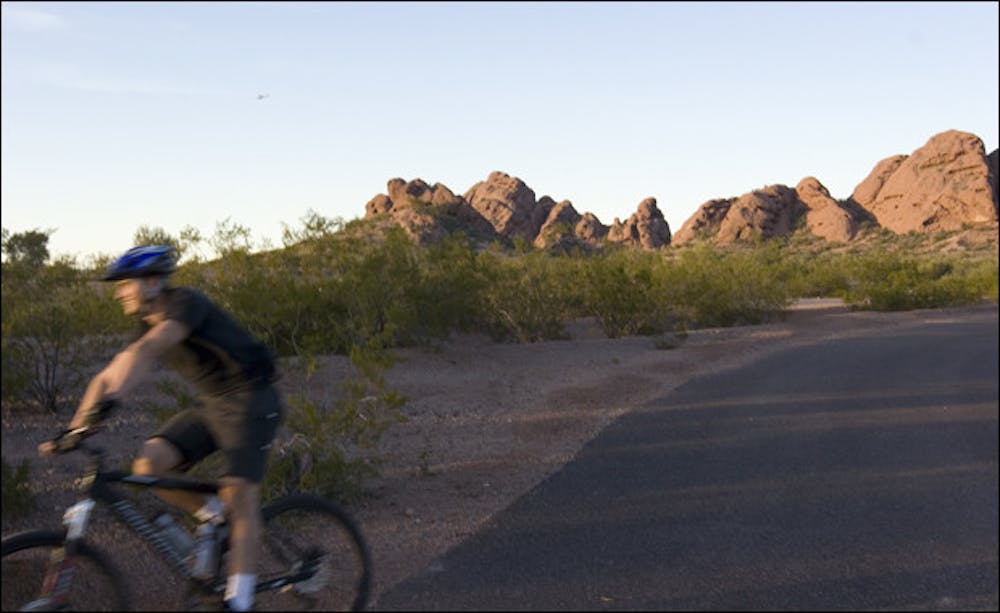Three Valley cities and a local American Indian community are making plans to expand and enhance the amenities within Papago Park.
City leaders from Tempe, Scottsdale, Phoenix and the Salt River Pima-Maricopa Indian Community are coming together to preserve Papago Park, the historic 1,200-acre land adjacent to Tempe Town Lake.
In 2007, Salt River Pima-Maricopa Indian Community gave a $100,000 grant to Tempe and two grants to Phoenix to develop a project plan for Papago Park.
With the funding, Tempe Mayor Hugh Hallman said the next step is to sit down and develop the plan.
“Given how compelling the case is for Papago Park, I’m not surprised we finally got to a point of awarding contracts for a consultant to help us do this,” Hallman said. “But I‘d be lying if I didn’t tell you I’m surprised it took us this long to get here.”
Hallman said the cities have allowed the park to deteriorate because people don’t view it as something as “holistic” as Central Park in New York City or San Diego’s Balboa Park.
Plant life and the fragile desert crust are just two elements of the park that are being destroyed because people walk on and ride their horses there, when they do not realize it is actually historic, sacred land, Hallman said.
“This is an amenity that we can brag about, not just around this country but across the globe,” Hallman said. “It’s one of the great urban parks in the world, and we’ve just done a terrible job [of] protecting it and displaying it well.”
No specific details for upgrade dates were available, but city leaders are sitting down to discuss the plans.
Currently the Phoenix Zoo, Botanical Gardens and five museums — including the Arizona Historical Museum and a military historical museum — are modern elements and amenities within Papago Park.
Hallman said rehabilitating the park’s lakes, getting better trail systems and a sensible archery range, will be some of the updates.
“We want the park to be seen more holistically,” Hallman said.
The upgrade will add economic value to the region by driving tourist dollars and also making the museum and other amenities immensely successful, he said.
Hallman began the project in August 2004 when he and Phoenix Mayor Phil Gordon were asked to give the welcoming comments to the Historic Preservation Officers conference at ASU.
Hallman was approached at around the same time to discuss the possibilities of Papago Park, and thus created the Papago Park Advisory Board.
For the Arizona centennial in 2012, Hallman and leaders decided to take the opportunity to rehabilitate and protect the park, rather than build a monument in commemoration of the celebration.
Kris Baxter, marketing director for the city of Tempe, said Papago is a huge park and a huge opportunity for the city residents and leaders to tie in all of the elements of the communities.
“[Papago Park] encourages the vitality as well, not only for the beauty it brings but also the tourism opportunities in our community and also continues to preserve our natural environment and our historic buildings,” Baxter said.
Reach the reporter at brianna.mattox@asu.edu.




